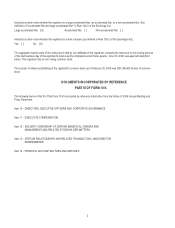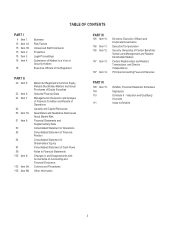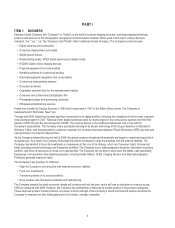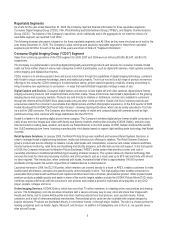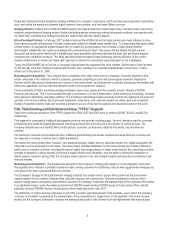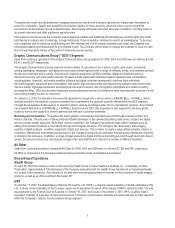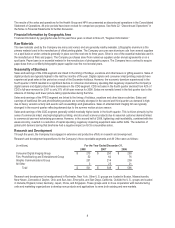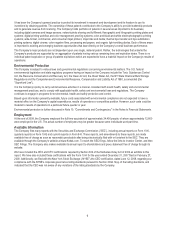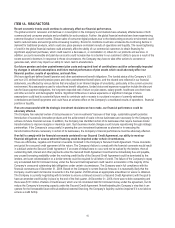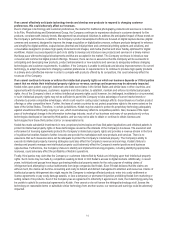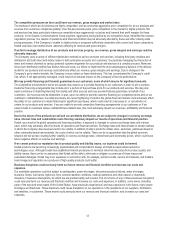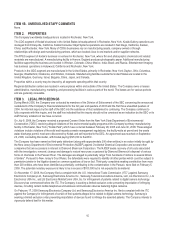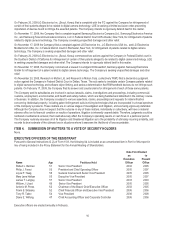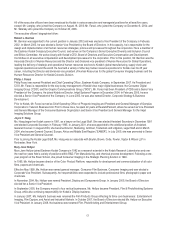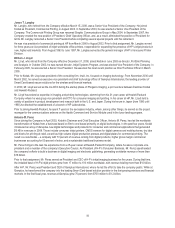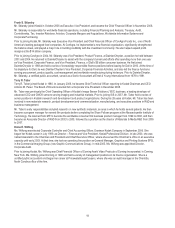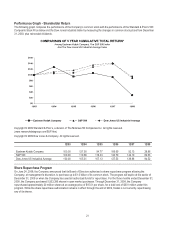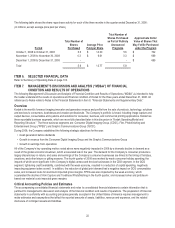Kodak 2008 Annual Report Download - page 14
Download and view the complete annual report
Please find page 14 of the 2008 Kodak annual report below. You can navigate through the pages in the report by either clicking on the pages listed below, or by using the keyword search tool below to find specific information within the annual report.12
If we cannot attract, retain and motivate key employees, our business could be harmed.
In order for the Company to be successful, we must continue to attract, retain and motivate executives and other key employees,
including technical, managerial, marketing, sales, research and support positions. Hiring and retaining qualified executives, research
professionals, and qualified sales representatives are critical to the Company’s future. Competition for experienced employees in
the industries in which we compete can be intense. The market for employees with digital skills is highly competitive and, therefore,
the Company’s ability to attract such talent will depend on a number of factors, including compensation and benefits, work location
and persuading potential employees that the Company is well-positioned for success in the digital markets Kodak is entering. Given
the Company’s compensation plans are highly performance-based and given the impact of the global economy on the Company’s
performance, it may become more challenging to retain key employees. The risk may be mitigated by the fact that many companies
recently are taking actions to limit or reduce compensation and benefits in light of the difficult economy. The Company also must
keep employees focused on the strategic initiatives and goals in order to be successful. If we cannot attract properly qualified
individuals, retain key executives and employees or motivate our employees, our business could be harmed.
System integration issues could adversely affect our revenue and earnings.
Portions of our IT infrastructure may experience interruptions, delays or cessations of service in connection with systems integration
or migration work that takes place from time to time; in particular, installation of SAP within our Graphic Communications Group. We
may not be successful in implementing new systems and transitioning data, which could cause business disruptions and be more
expensive, time consuming, disruptive and resource-intensive. Such disruption could adversely affect our ability to fulfill orders and
interrupt other processes. Delayed sales, higher costs or lost customers resulting from these disruptions could adversely affect our
financial results and reputation.
Our inability to effectively complete, integrate and manage acquisitions, divestitures and other significant transactions
could adversely impact our business performance including our financial results.
As part of our business strategy, we frequently engage in discussions with third parties regarding possible investments, acquisitions,
strategic alliances, joint ventures, divestitures and outsourcing transactions ("transactions") and enter into agreements relating to
such transactions in order to further our business objectives. In order to pursue this strategy successfully, we must identify suitable
candidates for and successfully complete transactions, some of which may be large and complex, and manage post-closing issues
such as the integration of acquired companies or employees. Integration and other risks of transactions can be more pronounced for
larger and more complicated transactions, or if multiple transactions are pursued simultaneously. If we fail to identify and complete
successfully transactions that further our strategic objectives, we may be required to expend resources to develop products and
technology internally, we may be at a competitive disadvantage or we may be adversely affected by negative market perceptions,
any of which may have a material adverse effect on our revenue, gross margin and profitability.
Delays in our plans to reduce the cost structure of the Company through execution of restructuring and other actions
could affect the consolidated results of operations, financial position and liquidity.
If the Company were to fail to successfully execute the plans within or the timing of its current restructuring program to align the cost
structure to the current economic realities, the Company’s financial performance could be adversely affected.
We have outsourced a significant portion of our overall worldwide manufacturing and back-office operations and face the
risks associated with relying on third party manufacturers and external suppliers.
We have outsourced a significant portion of our overall worldwide manufacturing, customer support and administrative operations
(such as credit and collections, and general ledger accounting functions) to third parties and various service providers. To the extent
that we rely on third party manufacturing relationships, we face the risk that those manufacturers may not be able to (1) develop
manufacturing methods appropriate for our products, (2) maintain an adequate control environment, (3) quickly respond to changes
in customer demand for our products, (4) obtain supplies and materials necessary for the manufacturing process, or (5) mitigate the
impact of labor shortages and/or disruptions. As a result of such risks, Kodak’s manufacturing costs could be higher than planned
and the reliability of our products could decline. Other supplier problems that Kodak could face include component shortages, excess
supply, risks related to terms of its contracts with suppliers and risks related to dependency on single source suppliers. If any of
these risks were to be realized, and assuming alternative third-party manufacturing relationships could not be established, we could
experience interruptions in supply or increases in costs that might result in our being unable to meet customer demand for our
products, damage to our relationships with our customers, and reduced market share, all of which could adversely affect our results
of operations and financial condition.


